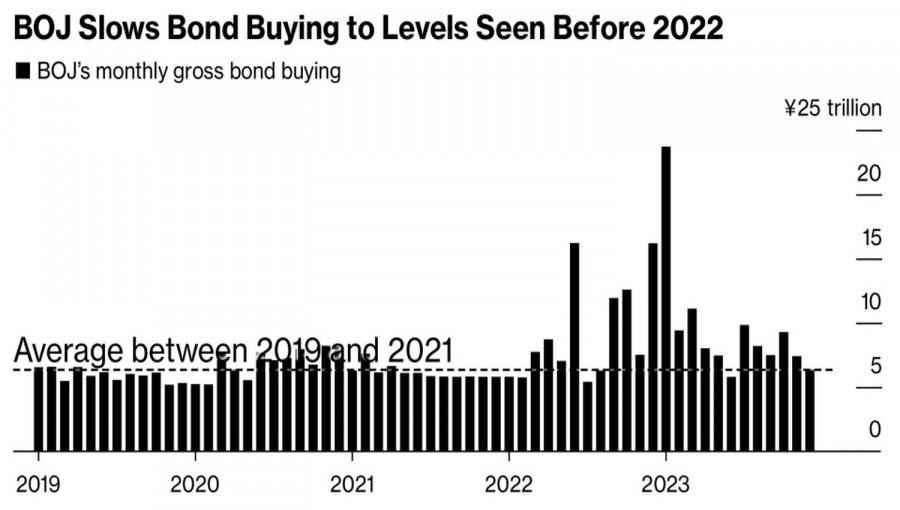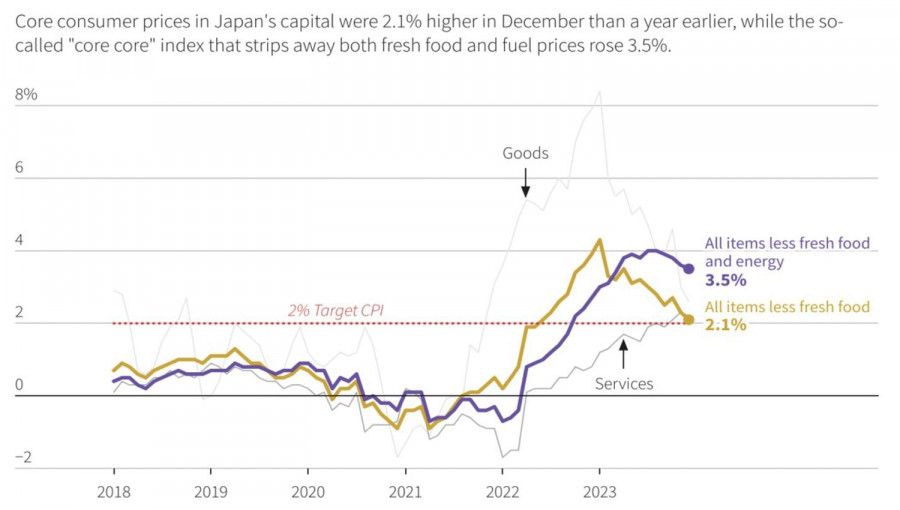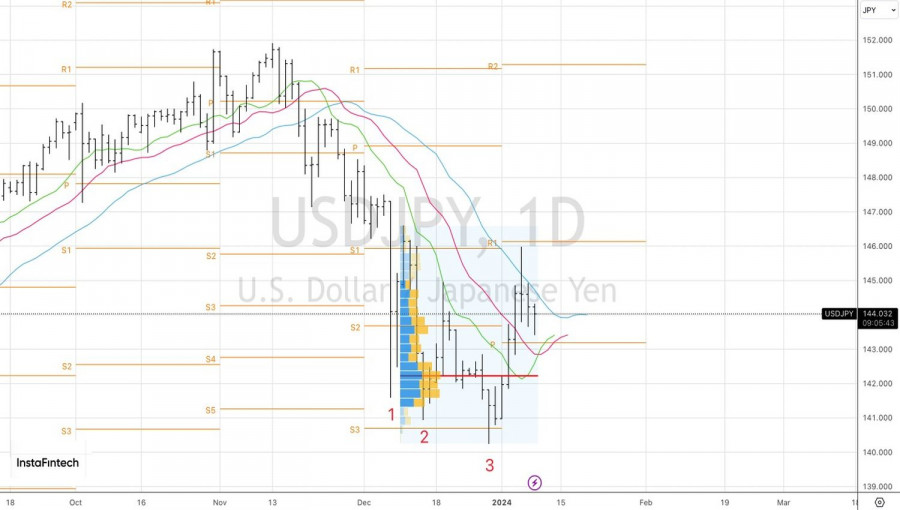Earthquakes on the Noto Peninsula on New Year's and a strong report on American employment have caused the Japanese yen to mark its worst weekly performance against the U.S. dollar in the last 16 months. However, the reduction in the BoJ's asset purchases under its quantitative easing program has allowed USD/JPY bears to recover and heal their wounds. The market still anticipates the Bank of Japan's exit from ultra-loose monetary policy. Will it happen?
The break in the upward long-term trend in the analyzed pair is due to expectations of the Federal Reserve lowering the federal funds rate from 5.5% to 4% in 2024, while the BoJ is raising the overnight rate from -0.1% to +0.1%. Markets are counting on 6 acts of monetary expansion from Washington and at least 2-3 acts of monetary tightening from Tokyo. Investors are eagerly watching for any signs of the Bank of Japan moving away from monetary stimulus. In this regard, the reduction in asset purchases under QE in the first week of January is a clear sign that Bank of Japan Governor Kazuo Ueda and his colleagues intend to normalize policy. Great news for the yen!
BoJ Asset Purchase Dynamics under QE

On the contrary, earthquakes in Japan create uncertainty regarding the decline in GDP volumes and the government's creation of a new budget. This forces the central bank to be cautious and not rush into abandoning negative interest rate policy. Investors no longer expect this to happen in January. They have shifted their expectations to April. The spot market considers June the most preferable month to start the process of normalizing monetary policy.
However, no one knows how events will unfold further. Yes, inflation in Japan has exceeded the target for two decades. However, it is not guaranteed that it will not rapidly decline in the future, as is happening in other developed countries. Indeed, the Tokyo Consumer Price Index, a leading indicator for national inflation, slowed down for the second consecutive time in December, from 2.3% to 2.1%.
Inflation Dynamics in Tokyo


If the main reason for rising consumer prices in Japan, as in other countries, is supply chain disruptions, their restoration could once again return the Land of the Rising Sun to deflation. This will eliminate the need for the BoJ to normalize monetary policy, and USD/JPY bears will lose their main advantage. The divergence in monetary policy will not be as pronounced as it is now, and the pair may remain stuck in consolidation for a long time.
Technically, on the daily chart of USD/JPY, a reversal pattern 1-2-3 has been clearly played out, allowing for long positions to be formed from the level of 142.2. At the same time, the inability of the bears to push quotes below the pivot level of 143.65 is a sign of sellers' weakness. This circumstance provides a basis for increasing long positions on breakouts of resistance levels at 144.35 and 144.9.
The material has been provided by InstaForex Company - www.instaforex.comfrom Forex analysis review https://ift.tt/mQdaVWv
via IFTTT
